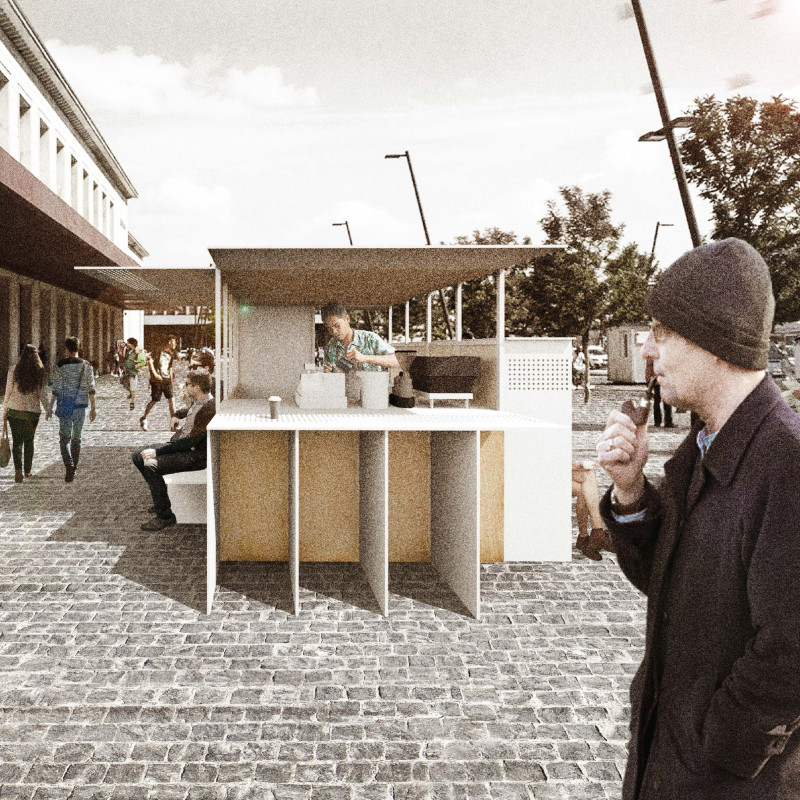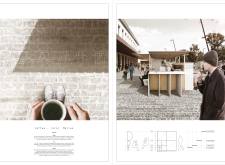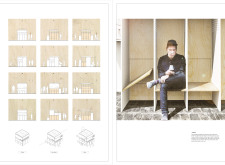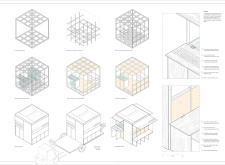5 key facts about this project
At its core, the function of this architectural project is to redefine the coffee shop experience, transforming it from a conventional retail space into an interactive hub. The design integrates fluidity and adaptability, allowing for various uses throughout the day. The kiosk's layout includes open sections that can expand or contract in response to user needs, accommodating different group sizes and activities. This flexibility is central to the design, reinforcing the belief that public spaces should evolve with the dynamics of urban life.
Key components of the project include a modular arrangement of seating that fosters social interaction. The seating is designed to allow for both intimate conversations and larger group gatherings, making the space versatile and engaging. This communal aspect is further enhanced by the orientation of the seating, which encourages users to interact with not only each other but also with the surrounding environment. In addition to seating, the kiosk features a thoughtful arrangement of elements such as integrated lighting, which adapts to the time of day, and responsive panels that adjust to external weather conditions. These features work in harmony to create a comfortable, inviting atmosphere that draws in passersby.
The material selection for "Coffee - In[n] Motion" demonstrates a commitment to sustainability while prioritizing aesthetic appeal. Plywood panels serve as the primary construction material, allowing for a warm finish that invites users into the space. The use of metal frameworks provides structural stability without overwhelming the minimalist design. Clear glass elements strategically incorporated into the facade enhance visual connectivity with the street, creating an open feel that encourages people to engage with the kiosk and its offerings. By focusing on materials that are both functional and appealing, the design reinforces its commitment to fostering a sense of place within the urban fabric.
Unique design approaches are evident throughout the project, particularly in the integration of technology and user experience. The potential incorporation of smart technology within the kiosk allows for real-time information updates, enhancing the overall visitor experience by delivering relevant announcements or interactive menu displays. This integration of technology addresses the modern user’s needs while reinforcing the social aspect of the coffee experience. Moreover, the innovative design incorporates elements that enable easy movement within the space, promoting a sense of flow that resonates with the concept of motion as central to the coffee culture.
In summary, "Coffee - In[n] Motion" exemplifies an architectural project that places emphasis on community engagement and adaptive design. Through its flexible spatial configuration and thoughtful material choices, the kiosk fits seamlessly into its urban surroundings while inviting social interactions. This project serves as a testament to the potential of architecture to create meaningful public spaces that resonate with the dynamics of contemporary urban life. Readers are encouraged to explore the project presentation further, reviewing architectural plans, architectural sections, and various architectural designs to gain deeper insights into the unique ideas and strategies employed within this engaging architectural endeavor.


























